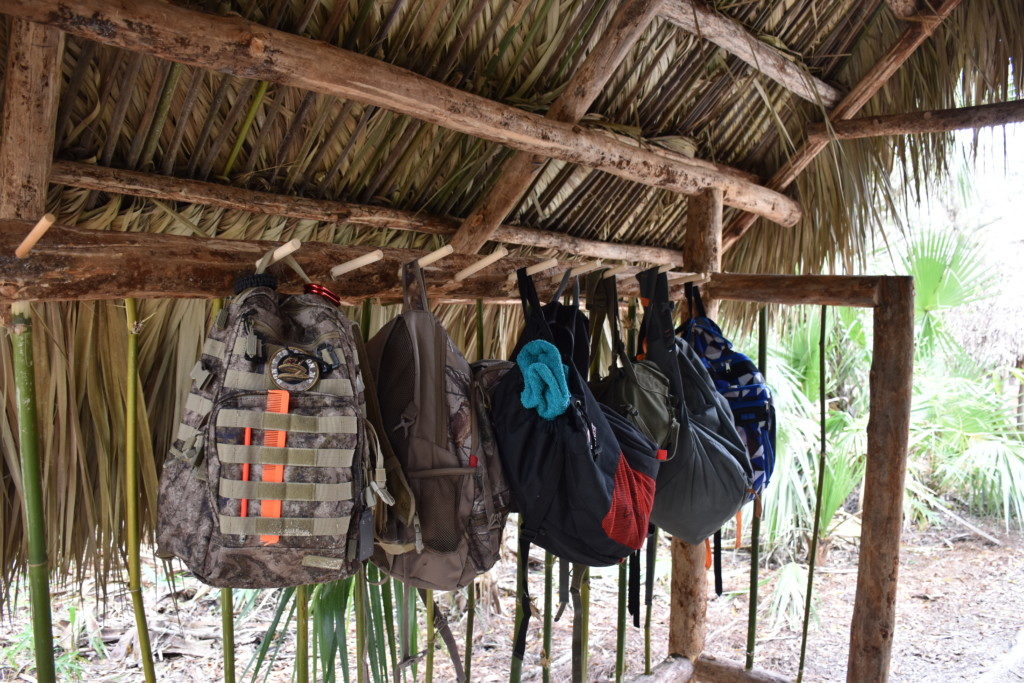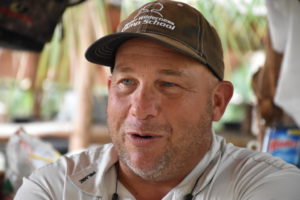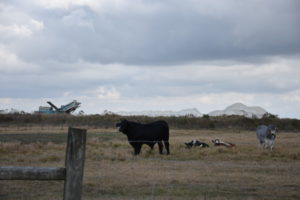
Editor’s note: See a profile of Gator Camp student Ross Perkins here.
Fighting, skipping, smoking pot – Jake Clayton’s freshman year in a public high school was a disaster, with explosive anger issues leading to a school record 44 disciplinary actions. Most days, the skinny kid with the mischievous smile would walk off campus and hang at a friend’s house. He failed nearly every class.
After his expulsion, his older sister discovered an off-beat private school called Gator Wilderness Camp, where troubled boys live on 250 acres with cows and beehives and learn to find paths to success. Could this work for Jake?
Jake’s adoptive mom, Virginia Clayton, was desperate enough to give it a shot. And thanks to a McKay Scholarship, a type of school choice scholarship for Florida students with disabilities, she could afford it.
Today, Jake is 17, months from graduating from his virtual high school, and planning to go to college. “The anger never comes out anymore,” he said. “I’d be in a pretty bad spot if I hadn’t gone to camp.”
Since its founding in 2009, Gator Wilderness Camp has served 139 students – nearly all of them on school choice scholarships – and become another distinctive piece in Florida’s increasingly diverse mosaic of educational options. Most of the roughly 2,000 private schools that participate in the state’s scholarship programs could be described as “mainstream,” but there are plenty of niche schools like Gator Camp. State-supported choice programs allow them to cater to the more specific needs of individual students and parents, and the more specific visions of individual educators.
Greg Kanagy, director of Gator Camp, is one of them. The mild-mannered 50-year-old grew up loving the outdoors in Pennsylvania, and earned degrees in physical education and special ed. He liked the idea of combining the two. “But I didn’t relish the thought of spending 25-30 years inside of four walls,” he said.

In South Carolina, he worked for a similar school and found a passion for helping at-risk boys. The concept was inspired by a Texan named Campbell Loughmiller, who developed the first camp near Dallas in the 1940s and helped spread the idea around the country. After Kanagy got his master’s in education, the opportunity arose to move his family to the semi-tropical wilds of southwest Florida and start Gator Camp.
There is no sign on State Road 131 in Charlotte County when it’s time to turn off the paved road. That’s intentional. Isolation is key. A couple of miles down a dusty, white-sand road, the “school” sits, surrounded by vast tracts of farmland. The nearest visible neighbor is a sand and shell mine.
“I was a bit afraid of getting my hands dirty,” Jake said, “but I was up for giving it a try.”
The environment helped. It was hot and buggy, but also incredibly peaceful to hear nothing but animals and breezes making their way through the oaks, pines and cypresses.
The camp serves boys in three separate age groups between 10 and 15, with no more than eight campers in each. Most have special needs or disabilities. Many are deeply wounded.
“The families are pretty hopeless when they call us,” said Jackie Brucker, one of the camp’s two full-time family social workers.
A camper’s session lasts 15-18 months. Tuition is $1,000 a month, which sounds prohibitive, but the camp works with families to pay what they can. “We started in September 2009. We had one boy and two counselors,” said Kanagy. “His family said they could pay $200 a month, which (I knew) they couldn’t do. So, it’s got to come from somewhere.”
Gator Camp uses two types of choice scholarships to bridge tuition gaps: McKay Scholarships for students with disabilities, and the Florida Tax Credit Scholarship* for lower-income students. The rest comes from grants and donations from organizations, businesses, and individuals.
Chief Greg – as he and the counselors are called – lists the tenants of how the camp works:
- Choice: Every boy agrees to attend. No one is forced.
- Relationships: Those within the group and with the chiefs are paramount and constantly worked on. “The camper-chief relationship is oftentimes the first successful trust relationship these boys have with an adult,” Kanagy said.
- Planning: Every day and every week, there is a plan, including chores and responsibilities.
- Structure: The boys wake up at 6:30 a.m. Every day the campsites are cleaned, pathways raked, gear stored. Bedtime is when all problems of the day have been solved.
- Problem-solving: When there’s any kind of conflict, even something as seemingly minor as name-calling, the group stops what it’s doing and talks it to a resolution.
- Evaluation: Everything they do is discussed after completion to analyze and reaffirm lessons learned.
The camp has horses, cows, bees (a dozen kid-sized suits were donated so the boys can help the beekeeper when he visits) and an area known as “Fruit Alley” with rows and rows of fruit trees.

There are no cellphones or video games.
“Come to camp,” Kanagy said, “and you’ll never hear them talk about missing those things.”
The boys are free to focus on themselves and their group, which is always planning something – budgets, meals, upgrading the facilities by hand, and trips to hike, swim and canoe. Every structure at the group’s campsite – including complex tiki huts – is either built or rebuilt by the boys.
“These represent some of the biggest accomplishments of their lives,” Kanagy said.
Jake’s anger issues came up frequently in his early days at camp, but the group and the chiefs talked it out meticulously. There was a lot of arguing, he said, but it was handled pretty quickly.
Jake got into a routine of doing the right things, and after several months began to realize how self-centered he had been. That’s when he started to truly embrace the group and help drive its progress along with his own.
“You had to want to be there and make a difference in your life,” he said. “I try to carry a lot of stuff over from camp. Structure is a big one. I felt lucky to go to a camp like that.”
The camp says 80 percent of its students graduate; 85 percent of its graduates stay out of legal trouble, and 80 percent stay in school or work. That is “considered very high for the population we’re working with,” Kanagy said.
“What this camp does is give the boys purpose,” he continued. “This is about a culture, and we work really hard to develop it and keep it in place. It’s incredible to see our students’ accomplishments.”
Step Up For Students, which publishes this blog, helps administer Florida’s tax credit scholarship program.



I have my grandson going to this camp. It was the hardest decision of my life, and still hard every time he leaves, to go back but after just 7 months I have already seen a huge difference in him. The people at this camp from the owners right down to the cooks are the best people you will every meet in your life time
As hard as it is to let go of your child trust me when I say they are truly in a safe and caring place. The staff is so dedicated to these boys and there family that all of your fears of loosing your child is put at ease. Then when you get to see what just a few months does to your child being there is so overwhelming that you cry again but this time it is happy tears. My grandson was so overcome by Greig, sadness, and hurt that i knew that I was loosing him to the world that we live in and there was no way out for him or us unroll we found this camp, and now he has a fighting chance to get his heart back, you see he had the biggest heart ever and he lost it on the way, but gator wilderness gave him back his heart and for that I am so very much thankful.